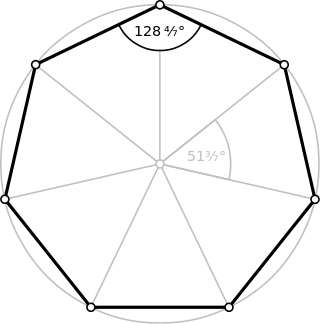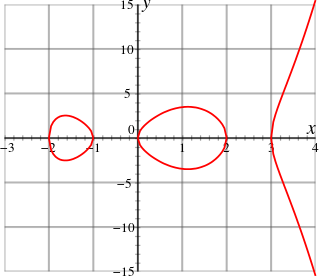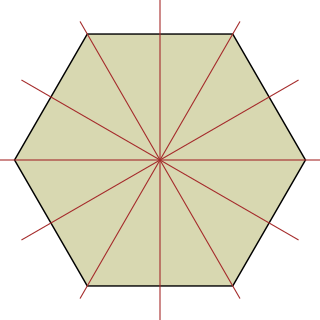Related Research Articles

In mathematics, a field is a set on which addition, subtraction, multiplication, and division are defined and behave as the corresponding operations on rational and real numbers. A field is thus a fundamental algebraic structure which is widely used in algebra, number theory, and many other areas of mathematics.

In the mathematical field of representation theory, group representations describe abstract groups in terms of bijective linear transformations of a vector space to itself ; in particular, they can be used to represent group elements as invertible matrices so that the group operation can be represented by matrix multiplication.
In mathematics, the Langlands program is a set of conjectures about connections between number theory and geometry. It was proposed by Robert Langlands. It seeks to relate Galois groups in algebraic number theory to automorphic forms and representation theory of algebraic groups over local fields and adeles. It is the biggest project in mathematical research. It was described by Edward Frenkel as "grand unified theory of mathematics."
There have been several attempts in history to reach a unified theory of mathematics. Some of the most respected mathematicians in the academia have expressed views that the whole subject should be fitted into one theory.
Field theory is the branch of mathematics in which fields are studied. This is a glossary of some terms of the subject.

In mathematics, a linear algebraic group is a subgroup of the group of invertible matrices that is defined by polynomial equations. An example is the orthogonal group, defined by the relation where is the transpose of .
In mathematics, monstrous moonshine, or moonshine theory, is the unexpected connection between the monster group M and modular functions, in particular the j function. The initial numerical observation was made by John McKay in 1978, and the phrase was coined by John Conway and Simon P. Norton in 1979.
In harmonic analysis and number theory, an automorphic form is a well-behaved function from a topological group G to the complex numbers which is invariant under the action of a discrete subgroup of the topological group. Automorphic forms are a generalization of the idea of periodic functions in Euclidean space to general topological groups.
Modular representation theory is a branch of mathematics, and is the part of representation theory that studies linear representations of finite groups over a field K of positive characteristic p, necessarily a prime number. As well as having applications to group theory, modular representations arise naturally in other branches of mathematics, such as algebraic geometry, coding theory, combinatorics and number theory.
In mathematics, the term Cartan matrix has three meanings. All of these are named after the French mathematician Élie Cartan. Amusingly, the Cartan matrices in the context of Lie algebras were first investigated by Wilhelm Killing, whereas the Killing form is due to Cartan.

In mathematics, a Cartan subalgebra, often abbreviated as CSA, is a nilpotent subalgebra of a Lie algebra that is self-normalising. They were introduced by Élie Cartan in his doctoral thesis. It controls the representation theory of a semi-simple Lie algebra over a field of characteristic .

Don Bernard Zagier is an American-German mathematician whose main area of work is number theory. He is currently one of the directors of the Max Planck Institute for Mathematics in Bonn, Germany. He was a professor at the Collège de France in Paris from 2006 to 2014. Since October 2014, he is also a Distinguished Staff Associate at the International Centre for Theoretical Physics (ICTP).

In mathematics, arithmetic geometry is roughly the application of techniques from algebraic geometry to problems in number theory. Arithmetic geometry is centered around Diophantine geometry, the study of rational points of algebraic varieties.
In algebra, a purely inseparable extension of fields is an extension k ⊆ K of fields of characteristic p > 0 such that every element of K is a root of an equation of the form xq = a, with q a power of p and a in k. Purely inseparable extensions are sometimes called radicial extensions, which should not be confused with the similar-sounding but more general notion of radical extensions.
In mathematics, many types of algebraic structures are studied. Abstract algebra is primarily the study of specific algebraic structures and their properties. Algebraic structures may be viewed in different ways, however the common starting point of algebra texts is that an algebraic object incorporates one or more sets with one or more binary operations or unary operations satisfying a collection of axioms.
In mathematics, the Chevalley–Shephard–Todd theorem in invariant theory of finite groups states that the ring of invariants of a finite group acting on a complex vector space is a polynomial ring if and only if the group is generated by pseudoreflections. In the case of subgroups of the complex general linear group the theorem was first proved by G. C. Shephard and J. A. Todd who gave a case-by-case proof. Claude Chevalley soon afterwards gave a uniform proof. It has been extended to finite linear groups over an arbitrary field in the non-modular case by Jean-Pierre Serre.

Representation theory is a branch of mathematics that studies abstract algebraic structures by representing their elements as linear transformations of vector spaces, and studies modules over these abstract algebraic structures. In essence, a representation makes an abstract algebraic object more concrete by describing its elements by matrices and their algebraic operations.

In mathematics, more specifically algebra, abstract algebra or modern algebra is the study of algebraic structures, which are sets with specific operations acting on their elements. Algebraic structures include groups, rings, fields, modules, vector spaces, lattices, and algebras over a field. The term abstract algebra was coined in the early 20th century to distinguish it from older parts of algebra, and more specifically from elementary algebra, the use of variables to represent numbers in computation and reasoning. The abstract perspective on algebra has become so fundamental to advanced mathematics that it is simply called "algebra", while the term "abstract algebra" is seldom used except in pedagogy.
James Edward Humphreys was an American mathematician who worked in algebraic groups, Lie groups, and Lie algebras and applications of these mathematical structures. He is known as the author of several mathematical texts, such as Introduction to Lie Algebras and Representation Theory and Reflection Groups and Coxeter Groups.